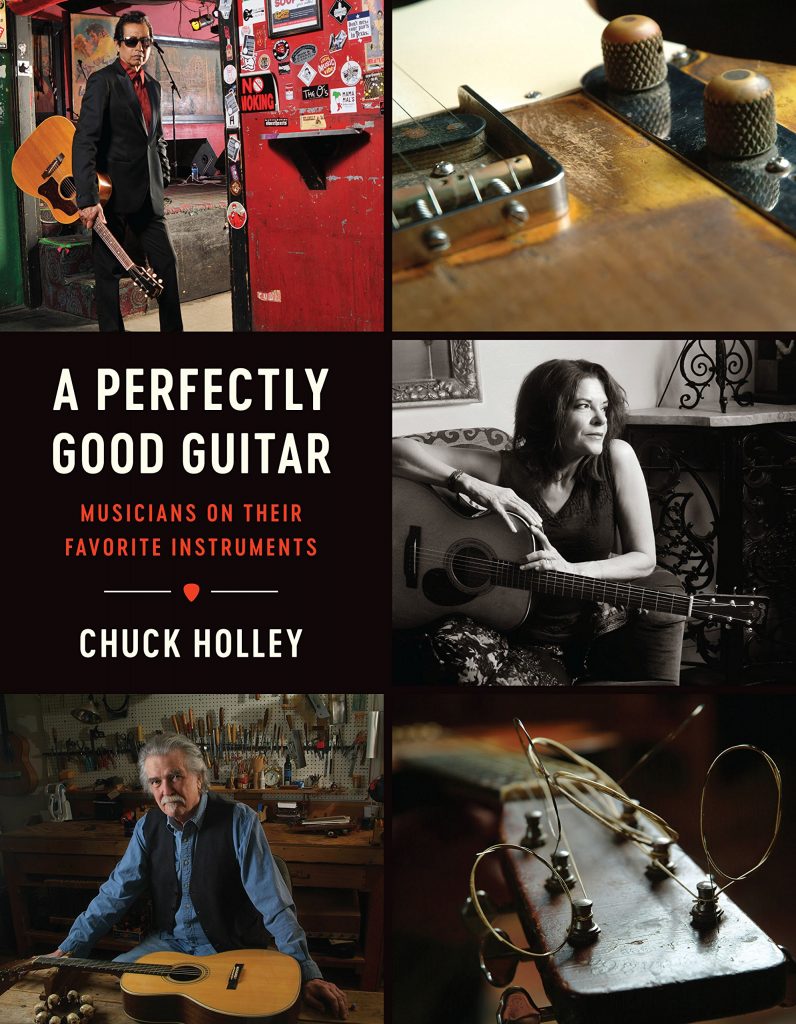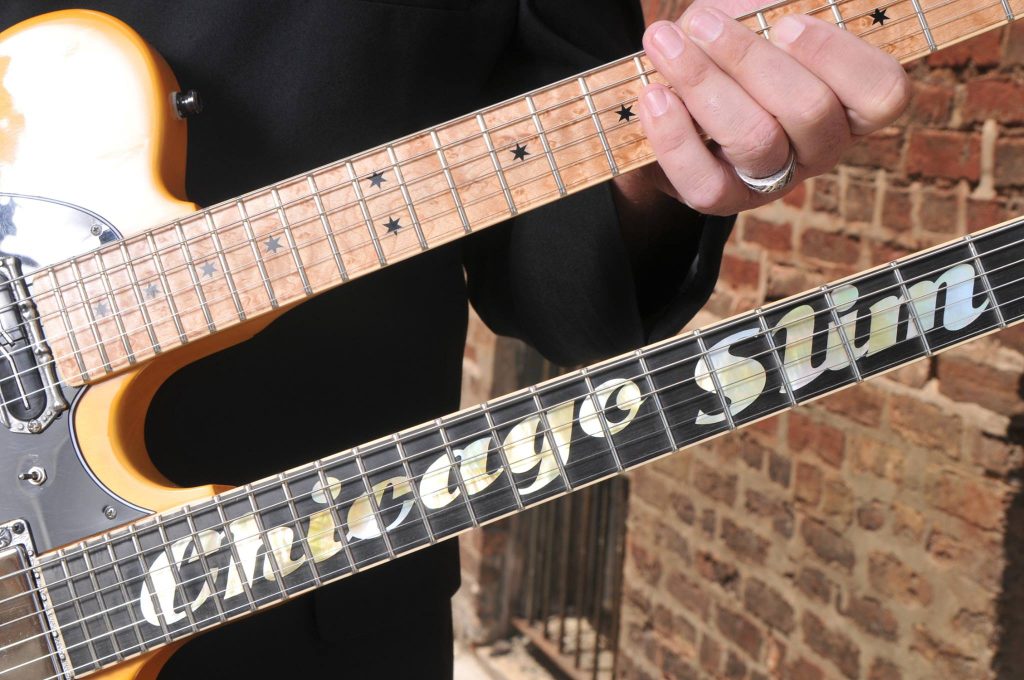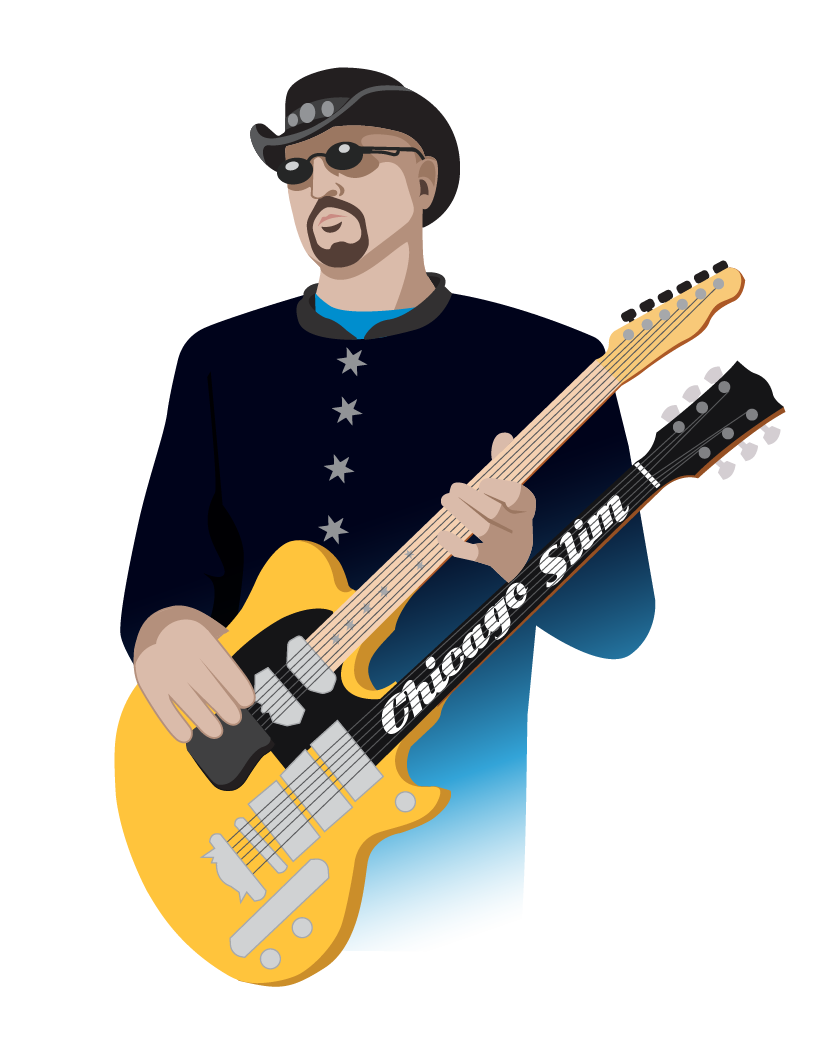Is Chicago Slim a serious axeman?
Chicago Slim, aka Dr. Daniel Ivankovich, is an accomplished guitarist, who’s performed with Bo Diddley, Otis Rush, James Cotton, Junior Wells, and dozens of others. But he’s much more than just a guitarist and vocalist, he’s also a blues historian, recording engineer, producer and ethnomusicologist. In 2015, Slim was inducted into the Chicago Blues Hall of Fame at the Master Blues Artist level.
What's an ethnomusicologist?
Ethnomusicology is the study of music from the cultural and social aspects of the people who make it. It encompasses distinct theoretical and methodical approaches that emphasize cultural, social, material, cognitive, biological, and other dimensions or contexts of musical behavior, in addition to the sound component.
What's a guitar historian?
Someone who is interested in preserving historical artifacts that pertain to guitars. Chicago Slim has spent decades amassing a collection of Chicago-built guitars from the 1930s to the 1960s, when the city was a leader in guitar making. His collection includes guitars from all the major Chicago manufacturers, including National, Supro, Harmony, Kay and Silvertone
Was Chicago historically important to the manufacture of musical instruments ?
From the 1930s through the early ’60s, Chicago was the world capital of guitar making. National, Supro, Harmony, Kay, Silvertone were all made here by the hundreds of thousands. Those companies and others headquartered in Chicago shared and swapped parts and designs and sold to the same distributors. Due to the low cost and wide distribution of their instruments, they produced far more guitars than Gibson or Fender. Some of their instruments were of dubious quality, often dismissed as “dime store guitars,” but others were—and are—excellent. More important, the ready availability of these guitars led to their prevalence in blues, country, early rock ‘n’ roll, and the British Invasion.
Why were Chicago built guitars so underrated?
Chicago-built guitars, like the bluesmen who played them, were discounted—until they received third-party validation from England. Racism and segregation were too pervasive. In the United States, Hendrix was a prophet without honor. He had to go to England to get discovered. Hendrix started playing on a Supro Ozark. Eric Clapton played a Kay Jazz II and a Thinline. Jimmy Page, Jeff Beck, and all those guys had various Chicago guitars that they’d seen the blues guys playing. Jimmy Page certainly knew about Supro amps! Those guys were studious, looking at pictures and figuring things out. Half a world away, they were getting Chess 45s, Kay guitars, and Supro amps.”
Where did Chicago Slim buy his first guitars?
Initially from pawnshops. I’ve spent decades assembling the collection of Chicago-built guitars, which includes all the major Chicago manufacturers and the dozens of brands under which their instruments were marketed. Those department store guitars were very innovative in terms of the building materials and manufacturing methods used to mass-produce the comparatively low-cost instruments. I’ve got picture after picture of artists who played Montgomery Ward guitars because they were affordable. They were everywhere. Maybe there wasn’t a Gibson dealer in your town, but there was a Sears, Roebuck catalog or store.
How did Chicago Slim start collecting guitars?
After my college basketball career was cut short by an injury, I spent six months in a cast. I listened to a lot of blues then. I went over to WNUR-FM, the radio station at Northwestern University, thinking I could do some sports broadcasting, but they needed someone to fill in on a blues program instead. Around the same time, I decided I needed a guitar. I bought a Supro “JB Hutto” Res-O-Glas for $75. A year later, I bought an Airline Res-O-Glas, which eventually became famous as Jack White’s guitar in White Stripes. Neither guitar had a case, so I carried them around in shopping bags. People would laugh at me until I plugged ‘em in and tore out my slide…
What a great story! Can you tell us more?
You can read more about my journey in a book by Chuck Holley. Chuck is a professional photographer and writer who loves music and listening to musicians talk about their trade. For several years, he has been photographing guitarists with their prized instruments and collecting their stories. My chapter can be found online here. Scroll up a little to get to the beginning of the chapter.

Can I get get the book on Amazon?
Yes! The guitarists included in this book range from high-profile performers, including Rosanne Cash, Guy Clark, Laurence Juber, Jorma Kaukonen, JD Souther, Bill Frisell, Dave Alvin, and Kelly Willis, to renowned studio musicians and band members. Holley’s beautifully composed photographs portray them with their favorite guitar, including detail shots of the instrument. Accompanying the photographs are the musicians’ stories about the Gibsons, Fenders, Martins, and others that have become the guitar in their lives, the one that has a special lineage or intangible qualities of sustain, tone, clarity, and comfort that make it irreplaceable. Several musicians talk about how the guitar chose them, while others recount stories of guitars lost or stolen and then serendipitously recovered. Together, these photographs and stories underscore the great pleasure of performing with an instrument that’s become a trusted friend with a personality all its own.
Does Chicago Slim have any favorite guitars?
I definitely do. Through the years, I’ve owned over 700+ vintage guitars, 350+ vintage lap steels and 300+ amplifiers that I can recall. Having had the opportunity to enjoy and perform with so many amazing instruments has certainly allowed me to develop specific preferences regarding what I like and what I love to play. My Chicago Slim Double Neck remains a signature axe, as does the Rodriguez Baritone Stratocaster and Reynolds Pegasus Custom. As far as favorite vintage guitars, they gotta’ be big to match up with my 7-foot frame. These are a 1939 National Tricone Resonator, 1957 Gibson ES-175, 1961 Epiphone Sorrento, 1963 Gibson ES-335, 1982 Gibson Flying V (unfortunately sold my 1958 during a moment of weakness), a 1983 Gibson L-5S and a 1996 Metropolitan Tanglewood Custom.
Where can I read more about vintage guitars that were made in Chicago?
Come on over to Premier Guitar and read about Windy City Gems
Can I see some of your guitars?
Sure can.
Groovin' on a Sunday afternoon . . with my wife, Karla . . and a few guitars

My Signature Axe . . The One & Only, Chicago Slim "LesCaster" Doubleneck

